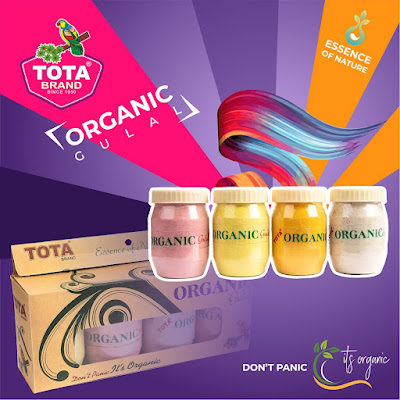Enjoy the festival of Holi use Holi color Powder
In India, Holi color powder, also known as "Gulal," plays a central role in the vibrant and joyous celebration of the Holi festival.
Here's a basic description of Holi color powder and its significance:
Holi Color Powder (Gulal):
1. Traditional Ingredients:
Organic Powders: Historically, natural ingredients like turmeric, neem, sandalwood, and other herbal extracts were used to make Gulal.
Synthetic Dyes (Modern): In contemporary times, synthetic dyes are often used to create a wide range of bright and vivid colors.
2. Vibrant Colors:
Gulal comes in a spectrum of vibrant colors, including red, yellow, green, blue, purple, pink, and more.
Each color holds its own significance, symbolizing various aspects of life, nature, and emotions.
3. Application:
During Holi celebrations, people joyfully smear or throw Gulal powder on each other as a gesture of love, friendship, and unity.
The colorful powder adds to the festive atmosphere, creating an ambiance of joy and merriment.
4. Symbolism:
Holi color powder symbolizes the arrival of spring and the triumph of good over evil, as depicted in the legend of Holika and Prahlad.
It also represents the diversity of life and the spirit of togetherness, as people from all walks of life come together to celebrate the festival.
5. Community Bonding:
The act of applying Gulal on others fosters a sense of camaraderie and fosters social harmony, as people set aside differences and come together in a spirit of celebration.
Holi color powder is often used in community gatherings, public events, and private celebrations across India.
6. Safety Concerns:
In recent years, there has been a growing emphasis on using organic and skin-friendly holi Gulal to minimize health risks and environmental impact.
Authorities encourage the use of natural colors or eco-friendly alternatives to synthetic dyes to ensure the safety of participants, particularly children and those with sensitive skin.
Conclusion:
Holi color powder, or Holi Gulal, is not just a colorful accessory but a symbol of joy, unity, and cultural heritage. Its significance extends beyond its visual appeal, embodying the spirit of Holi and the values of love, friendship, and inclusivity.






Comments
Post a Comment